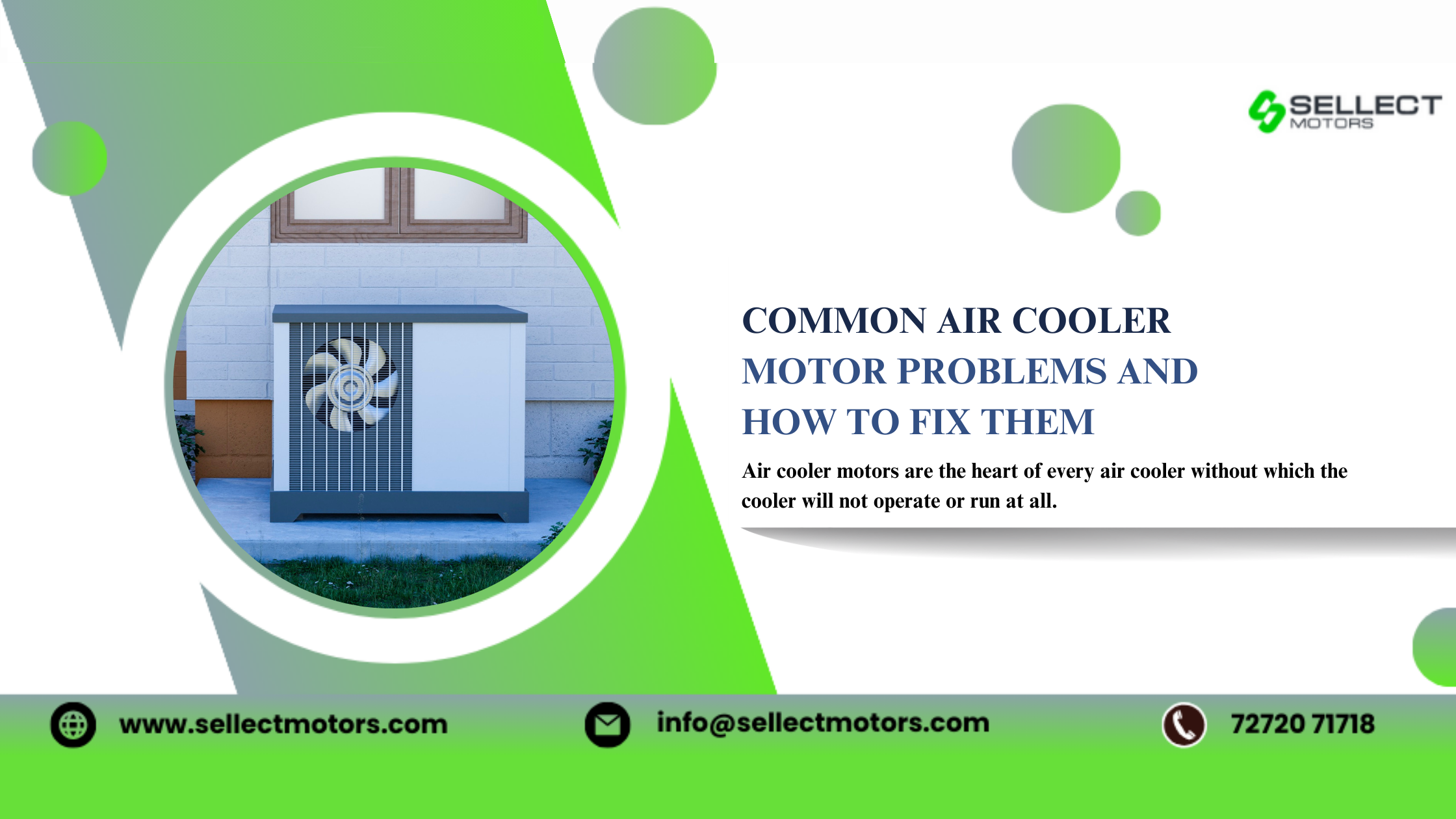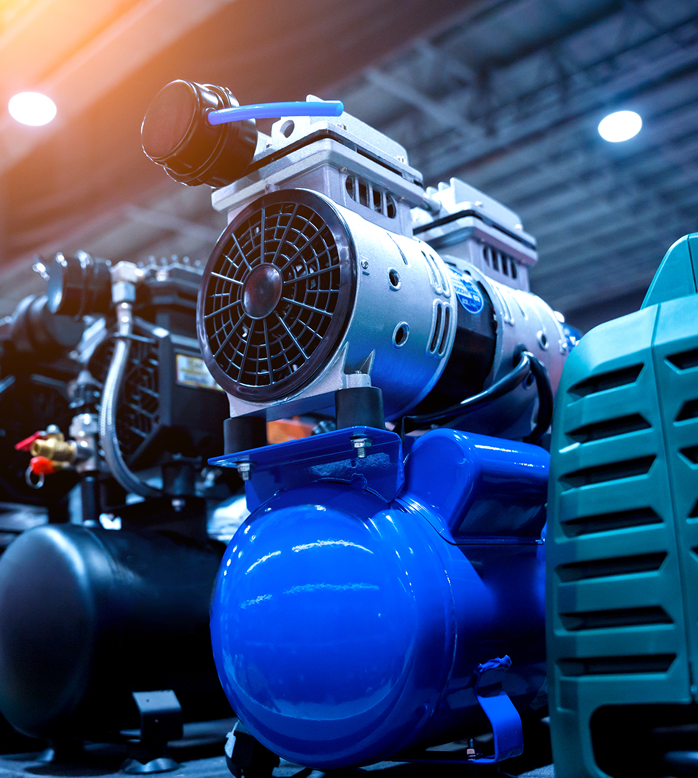Air cooler motors are the heart of every air cooler without which the cooler will not operate or run at all. Air cooler motors are rigid electrical structures made by the best air cooler motor manufacturers in India and are present at the tail of the air cooler fans which do not get worn easily. The main purpose of the pump is to push water through the pipe onto the cooling pads installed on the three sides of the cooler so that they are wet all the time during the cooler operation.
While air coolers motors do not get worn out easily and function very well for months and years, there are some factors which can cause them to be faulty. Also, there are some common air cooler motor problems which you can face in daily life which can be solved easily. We will discuss those common air cooler motor problems in this article and also how to fix them.
Air Cooler Motor
An electric motor that powers the air cooler’s fan blades is known as an air cooler motor. Depending on the kind of air cooler, it may be an AC or DC motor. Typically found at the rear of the air cooler, the motor drives the fan blades by transforming electrical energy into mechanical energy. The induction motor’s dependability, durability, and affordability make it an ideal option for an air cooler. However, for particular features like speed control or energy efficiency, some air cooler models could use alternative kinds of motors, such as brushless DC motors.
Common Air Cooler Motor Problems and Their Solutions
Noise (Rattling, Grinding, Humming):
Causes
- Loose Bolts or screws: Particularly when traveling at high speeds, loose parts may vibrate or rattle.
- Worn out Fan motor bearing: Grinding or humming sounds may be signs that a bearing needs to be replaced.
- Dirty or misaligned Fan blade: These conditions might produce noise and vibrations.
- Loose or misaligned Fan blade: This can make a rattling or vibrating sound.
- Motor damage: If the motor is damaged, it could not be able to rotate the blades properly, which would lead to the fan overheating.
Solutions
- Tighten loose bolts and screws: Inspect every bolt and screw and tighten it if required.
- Lubricate the bearings of fan motors: To cut down on noise and friction, use a lubricant.
- Clean or replace fan blades: Make sure the blades are correctly aligned and clear away any accumulated dirt.
- Replace worn bearings or the complete motor: If the grinding sound continues, it could be time to change the motor or the worn bearings.
- Check the motor: The fan may overheat if the motor has been damaged because it might not be able to spin the blades properly.
Overheating
Causes
- Clogged or dirty cooling pads: The motor may have to work harder and overheat due to reduced airflow.
- Motor failure: A malfunctioning motor may not start at all or overheat.
- Inadequate water supply: Overheating may result from low water levels.
- Clogged Filters: Dust and debris can obstruct airflow, decreasing cooling effectiveness.
Solutions:
- Cooling pads should be cleaned or replaced: Make sure there is no debris and the pads are clean.
- Examine the motor: The fan may overheat if the motor is damaged because it might not be able to spin the blades properly.
- Assure a sufficient supply of water: Frequently inspect and refill the water tank.
- Replace or clean the filters: To ensure peak performance, clean or change the filters on a regular basis.
The motor not starting or running slowly
Causes
- Defective electrical connection: The motor may not start if the electrical connection is loose or broken.
- Defective motor: A defective motor could have open windings or be damaged.
- Low voltage: The device could heat up if it fails to receive enough voltage for a period of time.
- Poor capacitor: 90% of fan speed problems are brought on by poor capacitor performance.
Solutions:
- Check the electrical wires: Look for any indications of loose connections or damage.
- Replace a malfunctioning motor: A malfunctioning motor must be replaced.
- Make sure there is enough voltage: Verify that the cooler is connected to an outlet that is operating correctly.
- Replace the capacitor: If there is a problem with the capacitor, replace it.
Other Problems
- Water tank leakage: Unusual noises emerging from the air cooler may potentially be caused by a malfunctioning water tank.
- Low water levels: For air coolers to work properly, there must be enough water.
- Filters that are clogged: Dust and debris can obstruct airflow, decreasing cooling effectiveness.





